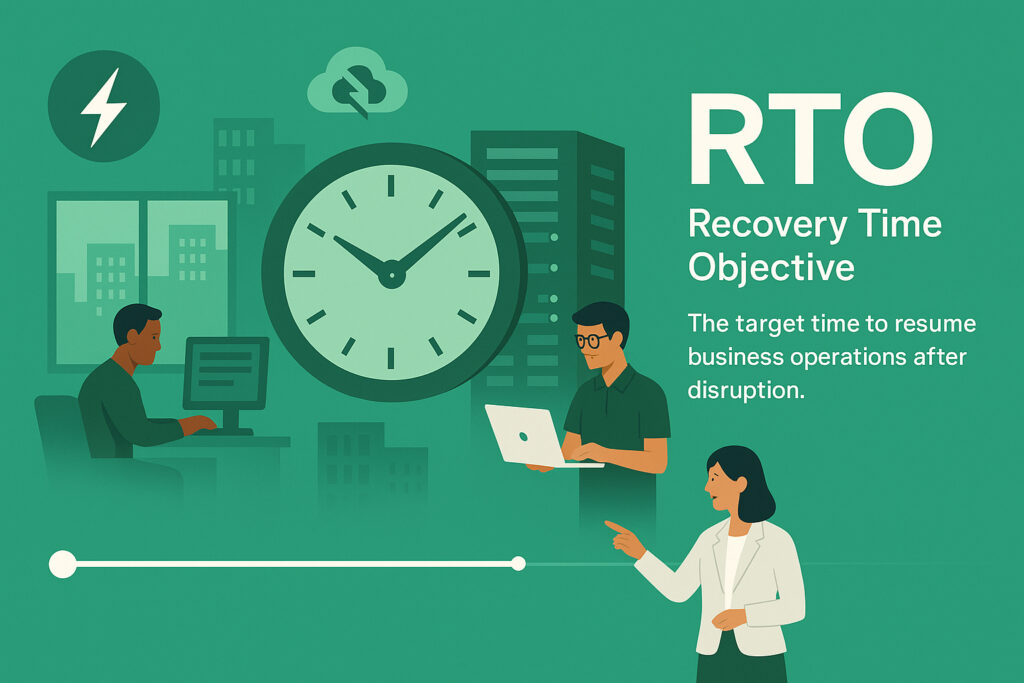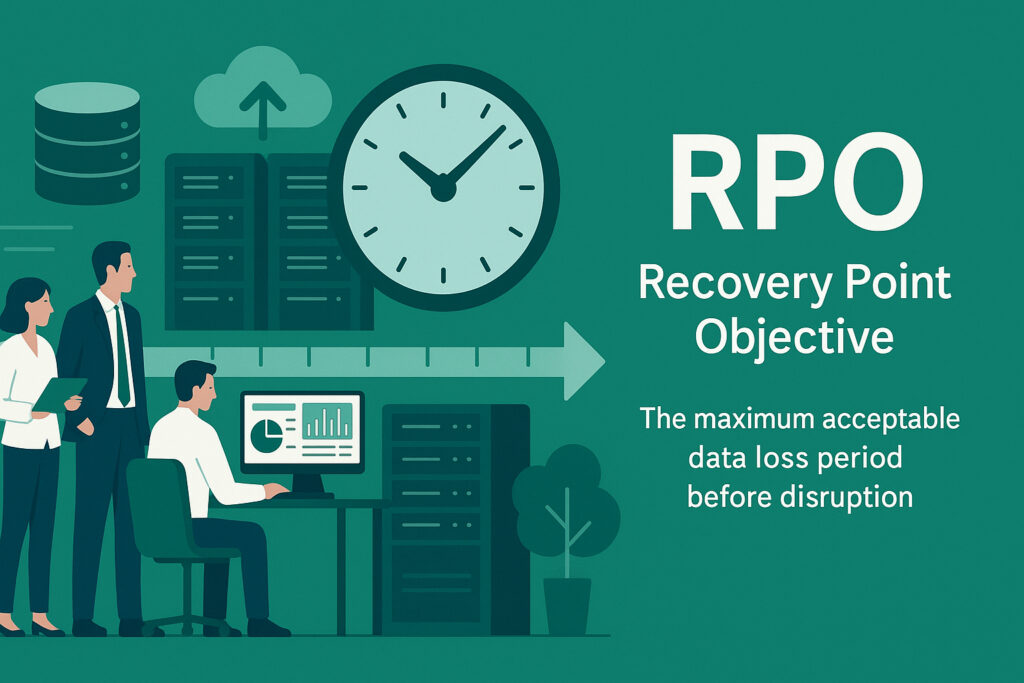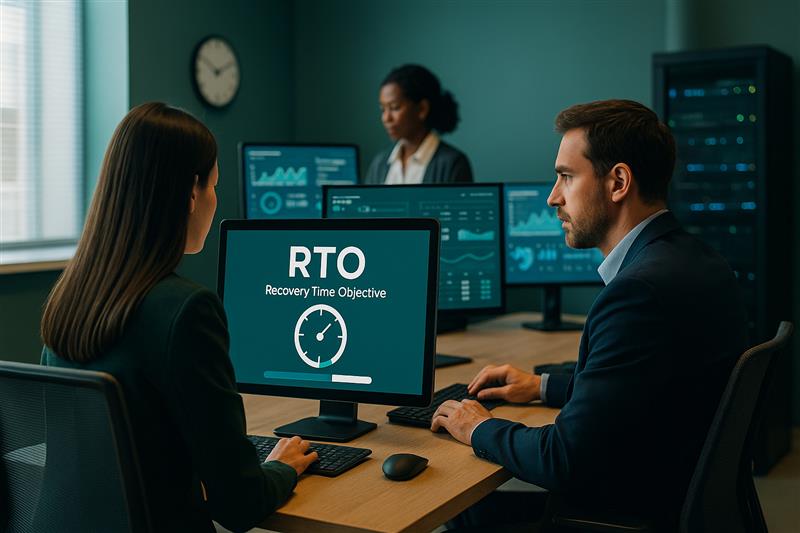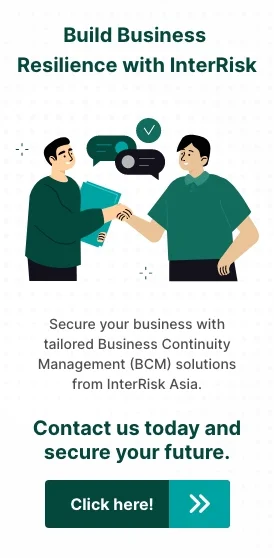When a business faces unexpected events such as system failures, disasters, or cyber-attacks, “RTO” is one of the key indicators that helps the business resume operations quickly and minimize damage. Let’s understand this concept, along with planning methods and the benefits of having a clear Recovery Time Objective (RTO).
When an organization encounters unexpected events such as system failures, disasters, or cyber-attacks (Cyber Security Incident), the first thing executives should understand is “What is RTO?” It is one of the key indicators that helps the business resume operations quickly and minimize damage. Let’s understand this concept, along with planning methods and the benefits of having a clear Recovery Time Objective (RTO).
HIGHLIGHTS:
- RTO is the maximum target time for an organization to restore systems or processes after a disruption to limit business impact.
- RPO is the maximum acceptable data loss period for an organization to ensure backup systems align with recovery goals.
- Setting appropriate RTO and RPO requires risk assessment and business impact analysis (BIA) to understand the importance of each process.
- The set RTO can be verified through testing and BCP exercises.
- InterRisk Asia specializes in Business Continuity Management (BCM), helping organizations set RTO, RPO, and comprehensive risk management plans to ensure long-term business resilience and sustainability.
What is RTO (Recovery Time Objective)?

RTO stands for Recovery Time Objective, which refers to the maximum target time set by an organization to restore systems, processes, or business operations to normal after a disruption, such as a power outage, server crash, or data loss.
For example, suppose an online ordering system has an RTO of 4 hours. In that case, it means the organization must restore the system within 4 hours after an incident to avoid impacting revenue or customer satisfaction.
The Recovery Time Objective (RTO) is a crucial indicator in the Business Continuity Plan (BCP) and Disaster Recovery Plan (DRP) that every organization should clearly define.
To set an appropriate RTO, organizations should start with a risk assessment to identify the most critical processes and their impact on the business.
What is RPO (Recovery Point Objective)?

When discussing RTO, we often hear the term RPO alongside it. RPO stands for Recovery Point Objective, which is the maximum acceptable period of data loss that a business can tolerate before a disruption occurs.
For example, if a system’s RPO is 2 hours, it means the backup system must save data at least every 2 hours to ensure that, in the event of an incident, the system can recover with minimal data loss.
What are the differences between RTO and RPO, and how to choose the right one for your business?
It often gets confused about what RTO is and how it differs from RPO. What are the goals of recovery? Both concepts are related but have different focuses. If the differences are correctly understood, organizations can choose RTO and RPO values that best align with their business needs and budget.
Difference
RTO
(Recovery Time Objective)
RPO
(Recovery Point Objective)
Definition
The time required to restore systems or processes to operational status.
The maximum allowable duration of data loss.
Objective
Minimize system downtime.
Minimize data loss.
Indicator
The duration (hours or minutes) required for the system to resume operation.
The duration (hours or minutes) of data loss.
Impact if the target is exceeded
Revenue loss and loss of trust.
Data loss, which can vary based on the significance of the data.
Selecting the right RTO and RPO involves evaluating the business type, system importance, and technological investment capacity. For instance, a bank might require an RTO of only a few minutes, whereas a small business might tolerate an RTO of several hours. Systematic determination of RTO and RPO is a key aspect of Operational Risk Management, enabling organizations to understand operational risks and formulate preventive plans in advance.
Examples of the differences between RTO and RPO.
Consider the case of a retail company with a 24-hour online sales system.
-
RTO
The company aims to restore the system within 2 hours in the event of a failure to prevent sales disruption. -
RPO
The company sets backups every 30 minutes, ensuring that the maximum data loss is limited to half an hour.
This strategy allows the company to control the impact on both “time” and “data,” which are central to the Business Continuity Management System (BCMS). BCMS encompasses both RTO and RPO. Furthermore, it is connected to Supply Chain Risk Management, as disruptions in the sales system affect inventory management, logistics, and customer satisfaction across the entire supply chain.
Benefits of setting RTO
Setting RTO is a strategic preparation to ensure that a business can confidently recover from unexpected events. It has several benefits, such as:
- Reducing financial damage by knowing the exact recovery time.
- Supporting the creation of Contingency Plan so that all departments have a common practice.
- Building trust with customers and partners by showing that the organization has a clear continuity management system.
- Enhancing readiness in Crisis Management and communication during crises.
- Aligning with international standards like ISO 22301, which emphasizes systematic RTO setting.
In summary, RTO is the heart of Risk Management, helping organizations effectively plan for real situations. Setting both RTO and RPO is also a key component of Enterprise Risk Management, allowing executives to see the overall risk picture in the organization, including operational, financial, technological, and reputational risks, to prioritize system recovery accurately.
Frequently Asked Questions (FAQs)
What does RTO, the target recovery time, mean?
It is the time frame within which an organization must restore critical processes to operational status after an incident, such as within 4 hours after a system failure.
What are MTPD, RTO, and RPO, and how do they differ?
- MTPD is the maximum period a business can tolerate being disrupted.
- RTO is the target time for system recovery.
- RPO is the maximum acceptable data loss period.
Where can I find the RTO?
To determine the RTO, you must start with a Business Impact Analysis (BIA) to analyze how the disruption of processes or systems would affect the business in terms of revenue, legal compliance, reputation, and service delivery. Then, you set the “acceptable downtime” for the business. If you are unsure how to determine the RTO or conduct a BIA, you can learn from InterRisk’s BCP training courses.
How can you know if the RTO you set is correct?
The way to verify if the RTO is correct is by conducting tests and BCP exercises, such as simulating actual system failures and seeing if the organization can recover within the set time. If it cannot, the plan must be revised, or resources must be increased to meet the target.
Should the RTO for each process be the same?
It is not necessary because each process has different importance. For example, the warehouse system can be down for 8 hours, but the online sales system must be back within 1 hour.
Does a good RTO need to be the shortest possible?
A good RTO should be “appropriate to the risk and budget” rather than being set too short to be practical.
Who determines the RTO?
Generally, it is the responsibility of the department overseeing each process, the risk management team, and senior executives who understand the business impact.
Does setting the RTO affect costs?
It has a direct impact because the faster the recovery time required, the more resources are needed. Backup systems and the technology used must also be more complex.
Is it necessary for small businesses to have an RTO?
It is very necessary because even small businesses face similar risks. Having an RTO helps reduce impact and prevent revenue disruption.
If the set RTO cannot be achieved, what should be done?
Consider it an opportunity for improvement. You may need to increase resources, review procedures, or adjust the RTO to match actual capabilities.
RTO is the recovery of an organization's systems after unexpected events. Find out about Recovery Time Objective with InterRisk Asia
RTO is a key aspect of business continuity management and a metric for assessing an organization’s ability to recover systems after unexpected events, such as natural disasters, technical issues, or cyber-attacks. Properly setting RTO through risk management and developing emergency and incident response plans will help businesses recover securely and sustainably.
InterRisk Asia, a consulting firm under the MS&AD Group from Japan, offers comprehensive BCM services. These include risk assessment, BCP development, BCP training, BCP exercises, and end-to-end consulting across various industries. We help organizations analyze and define appropriate values for RTO, RPO, and MTPD, ensuring business continuity even in the most challenging situations.
End-to-end consulting for the development of a robust BCMS, with pathways to ISO 22301 certification
Specialized training programs designed for both management and staff to enhance awareness and competency in BCMS practices.
Analysis of operational risks and disruption impacts to inform the development of targeted continuity strategies.
Structured exercises to validate your BCP and strengthen organizational preparedness and response capabilities.
Experienced consultants with hands-on BCMS expertise
Customized planning tailored to your business context.
Practical tools and templates, with expert support for testing and improvement.

